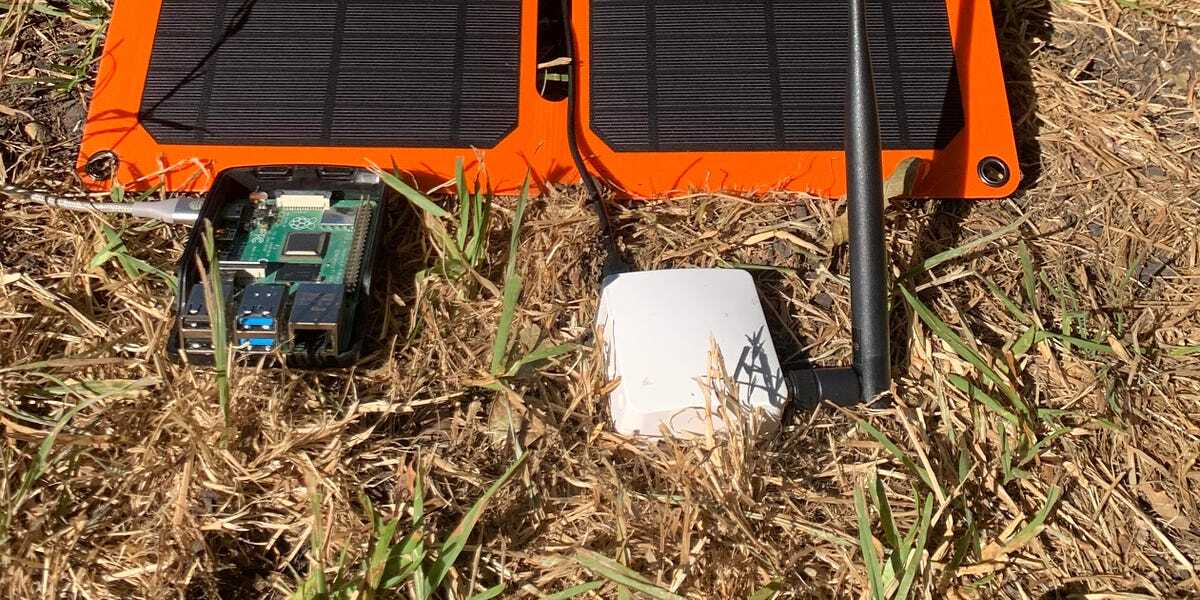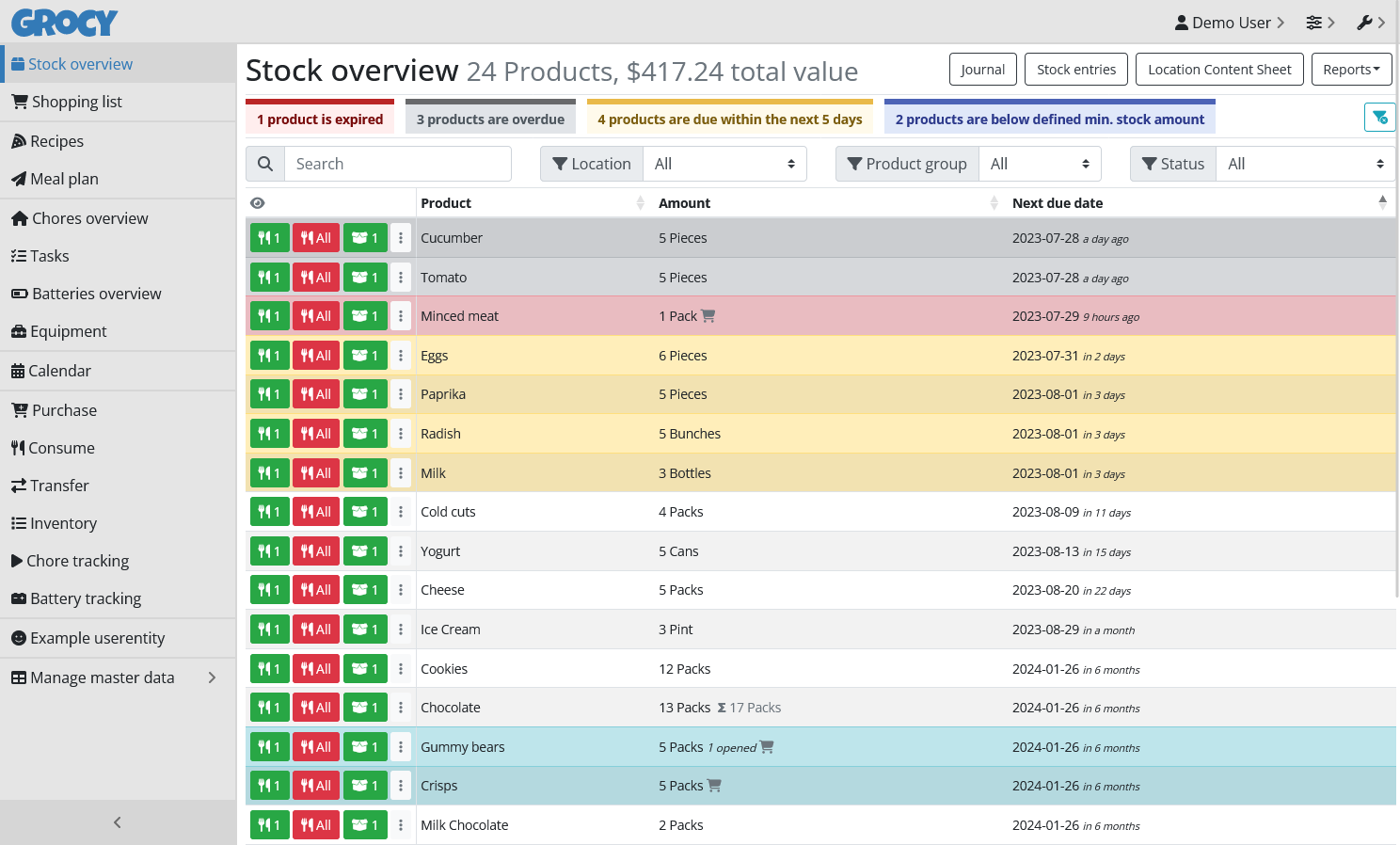greengnu 3 months ago • 100%
Warzone 2100 (you can download for free as it is an old PC game that went GPL)
gets more on the nose by the day
greengnu 3 months ago • 80%
a search engine for the gemini network protocol
Are they worth considering or only worth it at certain price points?
greengnu 3 months ago • 57%
gemini://gemplex.space/search
 gist.github.com
gist.github.com
greengnu 4 months ago • 100%
have 2 flash/hard/whatever drives: A and B
once a month (or at what ever frequency you can sustain)
backup your data to A and next cycle backup your data to B
nothing fancy or technical, just some basic consistent backups.
if you can do that you'll likely be fine. There are nearly infinitely many enhancements you can do if you are more technical or can follow technical instructions.
greengnu 5 months ago • 100%
That is just the gateway drug to bootstrapping.
Check out https://github.com/fosslinux/live-bootstrap
if you want the real hard stuff.
greengnu 8 months ago • 88%
They already did: https://www.commanderx16.com/
you just probably want something better.
and that is the problem building higher performance requires more advanced lithography and that is expensive and until recently was not even an option for a hobbyist (without taking a mortgage on their house).
Given current stagnation, you need only wait about 10 years for that viable option.
greengnu 8 months ago • 100%
rxvt-unicode with tabbedex.
I refuse to use a terminal emulator that needs more than 100MB of RAM to display 80x24 green text on a black display
greengnu 9 months ago • 100%
checksums at the filesystem level does nothing to protect against memory corruption which can overwrite everything on your disk with null values and a matching checksum; fail to write anything to disk and/or do nothing.
But that is the gamble you take every day with every GB of RAM you have.
greengnu 11 months ago • 100%
the correct answer is Gemini or gopher.
greengnu 11 months ago • 100%
No ECC, absolutely worthless for a NAS if you care about your data.
greengnu 12 months ago • 100%
a git mirror of the content is the golden standard if you can do that.
It is recommended by the permacomputing community
greengnu 12 months ago • 100%
incorrect, all of the previous versions and who made those changes would all be stored in the _A tables
greengnu 12 months ago • 100%
Raid stopped being optimal now that btrfs and ZFS exist.
If you plan on doing matching drives ZFS is recommended
If you expect mismatched disks, btrfs will work.
If you are most worried about stability get a computer with ECC memory.
If you are most worried about performance, use SSD drives.
If you want a bunch of storage for cheap, use spinning disks (unless you exceed the 100TB capacity range)
greengnu 12 months ago • 100%
looks interesting but does it have download/clone/mirror setup so that it doesn't become another data graveyard?
When you have a database with 6 Billion dollars (US) flowing through it every year, you need to be able to account and prove exactly every single penny and every single action that occurred. So you better have _A tables for all of the main tables and have these columns to boot. 1) Create_user_id – Who/what created the record 2) Create_Dt – When exactly was this record created 3) Update_user_id – If updated, who updated this record (default null) 4) Update_Dt – when was it last updated (default null) 5) Archive_Dt – When can we legally destroy these records 6) Unique_Trans_id – So that tracing down everything that occurred becomes even easier. It isn't sexy but it'll be handy if you ever need to trace down things in your database too.
greengnu 1 year ago • 100%
The tools are already readily available under FSF approved licenses. https://www.gnu.org/licenses/licenses.en.html
Support the FSF if that is a legitimate concern to you
greengnu 1 year ago • 100%
The tools are already readily available:
Relational Databases
SAT solvers
The missing bit is social action, which no amount of software can solve.
Knowing when a record can be disposed of in the future is deeply valuable to keeping database tables clean and containing only useful data. 31-DEC-2999 is pretty common for records that don't have an easily known value. If you are in an organization that is trying to monetize your data, treat this value as the date when the user will no longer be able to see this record. If you are in a more sane industry, treat it as the records retention date minus X number of days that match your _A table storage duration or if the record is already in your _A table, the date it will be deleted and no longer recoverable. You may wish to put some thought to your database backup and rotation schedule so that those records cleared by that date as well but I leave that as an exercise to the reader.
There are 2 ways of doing reference tables: unique hand written tables that perfectly match your desired data or The RT_ tables pattern mixed with cached views which will give a useful versioned reference table with an effective begin date, meaningful descriptions, version number, the effective end date (If it is set). With the ability to get previous version values if needed, who created the values, when the values were created, who updated the values and when they were updated (And if you follow _A table best practices, all of the previous updates too); not that you would likely need to update the values without doing a version update as well. Insert in the following order to avoid constraint violations: RT_TABLE RT_FIELD_DOMAIN (only need to add entries when creating new reference table views or adding columns to reference tables) RT_TABLE_FIELD (duplicate old RT_FIELD_DOMAIN values with new table to keep old column names) RT_FIELD_VALUES (Easiest to do 1 row or column at a time) Or just insert them all in a single transaction # RT_TABLE design This is the master reference table for finding what reference tables exist and the versions that exist for them. ``` | Name | Null | Type | |-----------------+----------+----------------| | REF_TABLE_ID | NOT NULL | NUMBER | | TABLE_ID | | NUMBER | | VERSION | | NUMBER | | NAME | | VARCHAR2(30) | | DESCRIPTION | | VARCHAR2(255) | | COMMENTS | | VARCHAR2(255) | | STATUS | | CHAR(1) | | CREATE_USER_ID | NOT NULL | VARCHAR2(20) | | UPDATE_USER_ID | | VARCHAR2(20) | | CREATE_DT | NOT NULL | DATE | | UPDATE_DT | | DATE | | UNIQUE_TRANS_ID | NOT NULL | NUMBER | | EFF_BEGIN_DT | NOT NULL | DATE | | EFF_END_DT | | DATE | | ARCHIVE_DT | NOT NULL | DATE | ``` REF_TABLE_ID is the primary key # RT_FIELD_VALUES design The actual reference table values ``` | Name | Null | Type | |--------------------+----------+---------------| | REF_TABLE_FIELD_ID | NOT NULL | NUMBER | | FIELD_ROW_ID | NOT NULL | NUMBER | | FIELD_VALUE | | VARCHAR2(255) | | CREATE_USER_ID | NOT NULL | VARCHAR2(20) | | UPDATE_USER_ID | | VARCHAR2(20) | | CREATE_DT | NOT NULL | DATE | | UPDATE_DT | | DATE | | UNIQUE_TRANS_ID | NOT NULL | NUMBER | | ARCHIVE_DT | NOT NULL | DATE | ``` REF_TABLE_FIELD_ID has a foreign key with RT_TABLE_FIELD.REF_TABLE_FIELD_ID FIELD_ROW_ID a sequence value used for all entries on a row # RT_TABLE_FIELD design This is the glue table for all of the reference tables ``` | Name | Null | Type | |--------------------+----------+---------------| | REF_TABLE_FIELD_ID | NOT NULL | NUMBER | | REF_TABLE_ID | NOT NULL | NUMBER | | FIELD_ID | NOT NULL | NUMBER | | CREATE_USER_ID | NOT NULL | VARCHAR2(20) | | UPDATE_USER_ID | | VARCHAR2(20) | | CREATE_DT | NOT NULL | DATE | | UPDATE_DT | | DATE | | UNIQUE_TRANS_ID | NOT NULL | NUMBER | | ARCHIVE_DT | NOT NULL | DATE | ``` REF_TABLE_FIELD_ID is the primary key (sequence or uuid) REF_TABLE_ID is a foreign key to RT_TABLE.REF_TABLE_ID FIELD_ID is a foreign key to RT_FIELD_DOMAIN.FIELD_ID # RT_FIELD_DOMAIN design The actual column names for the reference tables ``` | Name | Null | Type | |-----------------+----------+---------------| | FIELD_ID | NOT NULL | NUMBER | | NAME | | VARCHAR2(50) | | DATA_TYPE | | CHAR(1) | | MAX_LENGTH | | NUMBER(5) | | NULLS_ALLOWED | | CHAR(1) | | CREATE_USER_ID | NOT NULL | VARCHAR2(20) | | UPDATE_USER_ID | | VARCHAR2(20) | | CREATE_DT | NOT NULL | DATE | | UPDATE_DT | | DATE | | UNIQUE_TRANS_ID | NOT NULL | NUMBER | | ARCHIVE_DT | NOT NULL | DATE | ``` FIELD_ID is the primary key (sequence or uuid) # RT_ALL_MV design The master query behind all of the reference tables (keep it cached) ``` CREATE VIEW IF NOT EXISTS RT_ALL_MV AS SELECT A.NAME AS TABLENAME ,A.VERSION AS VERSION ,D.FIELD_ID AS FIELDID ,A.EFF_BEGIN_DT AS EFFBEGDATE ,A.EFF_END_DT AS EFFENDDATE ,B.FIELD_ROW_ID AS ROW_ID ,D.NAME AS COLUMNNAME ,B.FIELD_VALUE AS COLUMNVALUE FROM RT_TABLE A ,RT_FIELD_VALUES B ,RT_TABLE_FIELD C ,RT_FIELD_DOMAIN D WHERE A.REF_TABLE_ID = C.REF_TABLE_ID AND B.REF_TABLE_FIELD_ID = C.REF_TABLE_FIELD_ID AND C.FIELD_ID = D.FIELD_ID; ``` # Example RT_ view Current values can be just: SELECT * FROM RT_example_MV; For figuring out previous values or making a view: ## For sqls that support DECODE ``` SELECT MAX(DECODE(COLUMNNAME, 'CODE', COLUMNVALUE)) AS CODE ,MAX(DECODE(COLUMNNAME, 'DESCRIPTION', COLUMNVALUE)) AS DESCRIPTION ,MAX(VERSION) AS VERSION ,MAX(EFFBEGDATE) AS EFF_BEGIN_DT ,MAX(EFFENDDATE) AS EFF_END_DT FROM FROM RT_ALL_MV WHERE TABLENAME LIKE '%STATUS_IND%' AND VERSION=3 GROUP BY ROW_ID ORDER BY CODE; ``` ## For sqls without ``` SELECT MAX(CASE COLUMNNAME WHEN 'Code' THEN COLUMNVALUE END) AS 'Code' ,MAX(CASE COLUMNNAME WHEN 'S0_Rate' THEN COLUMNVALUE END) AS 'S0 Rate' ,MAX(CASE COLUMNNAME WHEN 'S1_Rate' THEN COLUMNVALUE END) AS 'S1 Rate' ,MAX(VERSION) AS VERSION ,MAX(EFFBEGDATE) AS EFF_BEGIN_DT ,MAX(EFFENDDATE) AS EFF_END_DT FROM RT_ALL_MV WHERE TABLENAME LIKE '%example%' AND VERSION=1 GROUP BY ROW_ID ORDER BY CODE; ```
The HIST_NAV_IND column: When you want a history of values (such as ratings) in the main table for some business requirement, add this column and use the following values: S => When you have only 1 record F => The first record when you have more than 1 record P => The current primary record when you have more than 1 M => The previous P records that have been surpassed. The EFF_BEGIN_DT and EFF_END_DT columns: In case you might need to do reprocessing of old records you will want an easy way to figure out which rate history that you would want to use; EFF_BEGIN_DT and EFF_END_DT make that simple. EFF_BEGIN_DT is always set in every record (generally it should match the create date but there are business reasons why you want it separate) EFF_END_DT should be NULL for the current primary record (unless you are organized enough to always know the future rate change date in advance [unlikely]) and should always be set for the M and F records to the day [or hour, minute or second] prior to the EFF_BEGIN_DT of the new P record. The EFF_END_DT of one record should never overlap with the EFF_BEGIN_DT of the next and you can use TRUNC("TimeStamp", DATE) to ensure that your select driver will always either get 1 [normally] or zero [They shouldn't have been included] records.
You will find 2 different implementations for this, the first (very wrong) is a unique sequence for every table and it serves the purpose of a HIST_SEQ column. The second (correct) is a global sequence which will be the same for all records in all tables which are updated by a single transaction. The purpose is to make it trivial to find all records (inserted, updated [ and deleted if using _A tables]) in a single transaction. [You'll want to add an AUDIT_UNIQUE_TRANS_ID column to your _A tables for that linkage] In simple environments this can be just a simple sequence and in more advanced environments this can be a UUID. The key is it must be unique on every transaction but its value should not be used to provide any information about the order of events in a table (that is the job of a HISTORY_SEQ column).
If you might need to store multiple duplicate records or want a sequence number for the order of created/updated records in your table. This is what you need, the big annoying bit is you need to also update this column on *EVERY SINGLE UPDATE* to that table and you'll want _A tables if you want to figure out historical ordering of events. And you will be creating a unique sequence for every single table where this column exists. but just shove that functionality in a trigger. This also would be quite handy if you want a unique key handle for picking which records are being manually deleted and you have the solution when one person updates a record at the same time someone else is trying to delete a record.
greengnu 1 year ago • 100%
So effectively light enough that it could run on a raspberry PI 4. Well that would put you under 10W
greengnu 1 year ago • 100%
Well the first question is what software you NEED to run, then we can figure out hardware.
greengnu 1 year ago • 20%
Your ZFS backup strategy should be to follow one of the following rulesets:
3-2-1 [3 copies of the data at 2 different locations for the 1 purpose of preserving the data]
4-3-2-1 [4 copies of the data at 3 different locations in 2 different types of media for the 1 purpose of preserving the data]
5-4-3-2-1 [5 copies of the data at 4 different locations across 3 different continents in 2 different types of media for the 1 purpose of preserving the data]
The details of the backup is more if you have a second system to enable ZFS send/receive or if you have to transport deltas from ZFS send
Sometimes called journal or audit tables. _A tables do the following magic trick: you can't screw up or delete your data in a way you can't recover. In the most simple version possible you take your table foo, duplicate it's structure in a table named foo_A and add 2 columns: audit_dt and audit_user_id. Then you create triggers for update and deletes on the table foo to first write the old values as a new insert in the foo_A table. Now even if you screw up your select and delete all of the contents of table foo. everything will still be in table foo_A. If you accidentally overwrite everything in foo with garbage data, the good data will still be in foo_A The application nor any of the users need to know about the _A tables (unless you want to leverage stored procedures instead of triggers to create the _A table entries)
greengnu 1 year ago • 100%
indeed, the default open and cooperation requires what social scientists call a cultural subsidy which historically is contributed by zealots.
greengnu 1 year ago • 100%
if you look at the Open Source Software community, you'll notice the FSF pulls the standard towards stability and publicly shames those who try to shift the standard towards proprietary.
but if you look at the Open Hardware community, you'll notice that it is lacking a sizable FSF community and it is sliding back into proprietary silos (Aka it is slowly dying in terms of actual openness).
greengnu 1 year ago • 100%
heating is not done year around (365.25 days/year) for the majority of the world's population.
Hence why places which need heating year around are generally considered an edge case.
greengnu 1 year ago • 0%
You forget the need for an FSF style fringe to make such a community stable long term.
greengnu 1 year ago • 100%
Yes in a scenario, which you are in a cold climate which it is always cold outside. Then yes, thermal energy storage would be an extremely efficient option.
It doesn't apply to most living humans but I grant you that special case.
yes, I did look at your link and noted all of sites are those near mountain ranges; which I certainly grant you is near (within 100 miles of) most human population centers.
greengnu 1 year ago • 100%
Tragically, you might be right about reduction in consumption being a cultural non-starter.
As it would make many things much easier but as you pointed out, advances in battery technology can fill some of that gap.
greengnu 1 year ago • 100%
There are a great many "promising" technologies in the pipeline, the real question is which of them actually suit our needs and only via real world trials will we discover the flaws and see if the benefits outweigh the flaws.
greengnu 1 year ago • 100%
well no storage can be 100% efficient but you are correct that thermal storage is very efficient if you want a thermal gradient to leverage for heating (cooling as well)
I am assuming you mean Pumped-storage hydroelectricity when you say PHES and no it also falls under F=ma, but when using the terrain is able to increase the amount of mass to a more industrial useful scale. The larger the scale the smaller the losses. Hence most economical when one has mountains for the storage of the water. (metal/plastic tanks on elevated platforms tend to be much less efficient and more expensive).
I guess it depends on what you mean by rare long duration events but yes one can imagine a situation where the burning of hydrogen is justified on an energy needs basis.
 hackaday.com
hackaday.com
with features down to 7 microns
 www.motherearthnews.com
www.motherearthnews.com
Short version, it is slow and potentially more expensive than hiring professionals
greengnu 1 year ago • 100%
I am assuming you are referring to: https://github.com/th3jesta/ha-lcars
greengnu 1 year ago • 100%
Depends on what you mean by a huge problem.
If you are referring to energy loses due to the large distances and the electrical resistance of the wires carrying that power; you'll discover those loses are directed related to current and that you can trade current for voltage and trade voltage for current; so we can avoid losses by upping the voltage.
If you are referring to the fact that the Earth's crust is moving, we can have geologists do some work; estimate the distances spaces where we will be running our wires and put in sufficient slack to cover the time period until the next maintenance window.
If you are referring to weather event induced disruptions in the grid (wind/tornadoes/etc taking out power lines) then you build alternate paths to route around damage.
If you are referring to solar storms and coronal mass ejections, then you need standards in your equipment to deal with out of spec distribution lines.
All of which are technical problems and easy to solve.
If you are referring to the bureaucratic hellscape that is international coordination and cooperation, then yes that is the only huge problem preventing such a solution, despite its numerous global economic and environmental advantages.
greengnu 1 year ago • 100%
harmonization of grid standards is more than just frequency (it is mostly policy paperwork and the replacement of non-compliant equipment or the installation of conversion equipment) but you are correct high voltage DC is used for long distance power transmission. There are also details such as who is responsible for paying for what, where things are to be connected and various other bureaucratic details.
greengnu 1 year ago • 100%
storage is only a problem if the global distribution grid is not created. The sun is always shining somewhere, especially if you realize we can leverage space to extend our collection.
cranes are just stupid energy storage (the F=ma bit basically makes this a non-starter) . Water in pumped storage only works out in huge scale (where you have mountains to provide a massive storage pool).
compressed air storage misses the point, use just a little more energy and you can use that energy to thermally separate CO2 from air. (This is a productive use of energy but bad efficiency for storage)
hydrogen production from water is a productive use if we want to remove hydrocarbons from some chemical processes but it is not an efficient battery.
Thermal storage of energy is very inefficient and not a good idea unless you are willing to waste a good deal of available energy.
And flywheels are not even mentioned and very wrong information about Tesla power walls.
greengnu 1 year ago • 100%
The big companies are ignoring the sector and just plan on buying the most profitable startups that look promising.
So ignore the fortune 1000 entirely and invest in smaller companies that are hiring engineers in chemistry if your goal is to invest effectively in battery technology.
But you are missing the advances in metallurgy (superconducting metals are making great strides), mechanical engineering (flywheel technology is taking advantage of new micro-controlled magnetic bearings) and physics.
greengnu 1 year ago • 100%
Well a superconducting loop (even with liquid nitrogen costs/inefficiencies) would enable a global grid with quite minimal energy loses and reduce the amount of energy storage needed to sustain a stable grid even in the face of failures and disruptions.
The big problem tends to do with harmonization of energy grid standards.
greengnu 1 year ago • 100%
well as you can buy solar panels at $0.50/W so a 10W panel can be obtained for $5 and a raspberry pi4 only uses 2.7W while idle and 6.4W when under full load.
greengnu 1 year ago • 100%
well mass production certainly is a great deal more energy efficient than individual production. But it is always useful for the magic of how things could be made to be revealed.
greengnu 1 year ago • 100%
HTME really helps to demonstrate some of the lesser known bits of technology
greengnu 1 year ago • 40%

Efficient is sexy
greengnu 1 year ago • 100%
Sounds like they didn't consider appealing to UK government to get subsidized liquid CO2 and use the produced hydrogen to synthetically create hydrocarbons (which are much easier/cheaper to store) and win political points doing so.
greengnu 1 year ago • 66%
The breeder part is the production of U-233 (which is then fissioned and used to provide the neutrons for converting Th-232 into U-233 (with a chemical separation and decay storage step in between)) which although has a tight neutron economy is viable.
Working reactors for such designs were funded by the US airforce and they did operate as expected.
If you wish to argue that one will need U-235 as a startup fuel or that there are technical problems in large scale energy production it is not yet able to address, I would definitely agree on that; the technology needs more research before we depend upon it and that Uranium light water reactors are likely to be the running standard until such time and needed investment occurs. But we have enough U-235 in nuclear waste stockpiles to fuel our civilization for a thousand years to work out the details.
greengnu 1 year ago • 100%
Guess they now know the value of having the 4 freedoms https://www.gnu.org/philosophy/free-sw.en.html the hard way
Doesn't work against fully autonomous drones but should limit remotely controlled ones.
 terraformindustries.wordpress.com
terraformindustries.wordpress.com
Short version: cheap electricity + water
 opensanctuary.org
opensanctuary.org
 openfarm.cc
openfarm.cc
Each Guide is based on specific environmental conditions and growing practices, and ranked for compatibility with you and your gardens.
 github.com
github.com
because everyone should have access to publicly funded works
and readers are readily available: https://wiki.openzim.org/wiki/Readers
A massive collection of source code for running the infrastructure of a solar punk future.
* Ammonia (NH3) Very popular scrubbing solvent to remove pollutants from fossil fuel combustion streams before they can be released to the atmosphere. Also a popular refrigerant and precursor to nitric acid. (Key to making artificial fertilizers) * Calcium Oxide (CaO) [quicklime or burnt lime] As a cheap and widely available alkali. About 50% of the total quicklime production is converted to calcium hydroxide before use. Both quick- and hydrated lime are used in the treatment of drinking water. It can be created by heating the limestone to 900°C for several hours which would turn the limestone into quick lime * Calcium hydroxide [hydrated lime, caustic lime, builders' lime, slack lime, cal or pickling lime] Calcium hydroxide is commonly used to prepare lime mortar. One significant application of calcium hydroxide is as a flocculant, in water and sewage treatment. It forms a fluffy charged solid that aids in the removal of smaller particles from water, resulting in a clearer product. This application is enabled by the low cost and low toxicity of calcium hydroxide. It is also used in fresh-water treatment for raising the pH of the water so that pipes will not corrode where the base water is acidic, because it is self-regulating and does not raise the pH too much. It can be created by combining quicklime with water to form slaked lime * Ethylene (C2H4) Probably the most popular industrial precursor to polymer manufacturing * Hydrochloric Acid (HCl) Used mainly in the production of other chemicals (by acting as a reactant or a catalyst) * Methanol (CH3OH) Used as a reactant to make methyl tertbutyl ether (MTBE), formaldeyde, and acetic acid. * Nitric Acid (HNO3) Most common application is its reaction with ammonia to form the solid fertilizer ammonium nitrate the most widely used solid fertilizer. Nitric acid is subject to thermal or light decomposition and for this reason it was often stored in brown glass bottles Nitric acid's boiling point of 83 °C. (68% solution boils at 121 °C). Dilute nitric acid may be concentrated by distillation up to 68% acid, which is a maximum boiling azeotrope. In the laboratory, further concentration involves distillation with either sulfuric acid or magnesium nitrate, which serve as dehydrating agents. Such distillations must be done with all-glass apparatus at reduced pressure, to prevent decomposition of the acid. Industrially, highly concentrated nitric acid is produced by dissolving additional nitrogen dioxide in 68% nitric acid in an absorption tower. The dissolved NOx is readily removed using reduced pressure at room temperature (10-30 minutes at 200 mmHg or 27 kPa) to give white fuming nitric acid. * Propylene (C3H6) Another industrial polymer precursor * Sodium Carbonate (Na2CO3) [washing soda, soda ash and soda crystals] Used in many cleaning agents and in glass making. Sodium oxide is a component of most glass, although it is added in the form of "soda" (sodium carbonate). Typically, manufactured glass contains around 15% sodium oxide, 70% silica (silicon dioxide) and 9% lime (calcium oxide). The sodium carbonate "soda" serves as a flux to lower the temperature at which the silica mixture melts. Soda glass has a much lower melting temperature than pure silica, and has slightly higher elasticity. * Sodium hypochlorite (NaClO) [liquid bleach] A method of producing sodium hypochlorite involving the electrolysis of brine to produce sodium hydroxide and chlorine gas, which then mixed to form sodium hypochlorite. Today, an improved version of this method, known as the Hooker process (named after Hooker Chemicals, acquired by Occidental Petroleum), is the only large-scale industrial method of sodium hypochlorite production. In the process, sodium hypochlorite (NaClO) and sodium chloride (NaCl) are formed when chlorine is passed into cold dilute sodium hydroxide solution. The chlorine is prepared industrially by electrolysis with minimal separation between the anode and the cathode. The solution must be kept below 40 °C (by cooling coils) to prevent the undesired formation of sodium chlorate. Sodium hypochlorite can be easily produced for research purposes by reacting ozone with salt. NaCl + O3 → NaClO + O2 This reaction happens at room temperature and can be helpful for oxidizing alcohols. * Sodium Hydroxide (NaOH) [lye and caustic soda] The most popular alkaline substance in industry. Widely used in dyes and soap manufacturing. Also a good cleaning agent and can be used to neutralize acids. * Sulfuric Acid (H2SO4) Probably the most common industrial acid. Used widely in mineral leaching and gas scrubbing (removing dangerous substances). Also used to neutralize alkaline substances and as an electrolyte in lead-acid batteries. A nation's sulfuric acid production is a good indicator of its industrial strength. Sulfuric acid can be obtained by dissolving sulfur trioxide in water. * potassium carbonate (K2CO3) [Potash] Used in agriculture as a crop fertilizer. * Urea (CO(NH2)2) [carbamide] More than 90% of world industrial production of urea is destined for use as a nitrogen-release fertilizer.Urea has the highest nitrogen content of all solid nitrogenous fertilizers in common use. Therefore, it has a low transportation cost per unit of nitrogen nutrient. An essential ingredient in diesel exhaust fluid (DEF), which is 32.5% urea and 67.5% de-ionized water. DEF is sprayed into the exhaust stream of diesel vehicles to break down dangerous NOx emissions into harmless nitrogen and water. The most common impurity of synthetic urea is biuret (HN(CONH2)2), which impairs plant growth. * Lithium peroxide It is prepared by the reaction of hydrogen peroxide and lithium hydroxide. This reaction initially produces lithium hydroperoxide: LiOH + H2O2 → LiOOH + 2 H2O This lithium hydroperoxide has also been described as lithium peroxide monoperoxohydrate trihydrate (Li2O2·H2O2·3H2O). Dehydration of this material gives the anhydrous peroxide salt: 2 LiOOH → Li2O2 + H2O2 + 2 H2O Li2O2 decomposes at about 450 °C to give lithium oxide: 2 Li2O2 → 2 Li2O + O2 It is used in air purifiers where weight is important, e.g., spacecraft to absorb carbon dioxide and release oxygen in the reaction.
volume 1 can be found here: https://drive.google.com/file/d/1pqJPKT-eZUNuaL2-lo3jeJLr_Oyxj1t4/view?usp=sharing
* Haber-Bosch process the Haber-Bosch process, is an artificial nitrogen fixation process and is the main industrial procedure for the production of ammonia today. The process converts atmospheric nitrogen (N2) to ammonia (NH3) by a reaction with hydrogen (H2) using a metal catalyst under high temperatures and pressures. This conversion is typically conducted at pressures above 10 MPa (100 bar; 1,450 psi) and between 400 and 500 °C (752 and 932 °F), as the gases (nitrogen and hydrogen) are passed over four beds of catalyst, with cooling between each pass for maintaining a reasonable equilibrium constant. On each pass only about 15% conversion occurs, but any unreacted gases are recycled, and eventually an overall conversion of 97% is achieved. * Ostwald process Ammonia is converted to nitric acid in 2 stages. Typical conditions for the first stage, which contribute to an overall yield of about 98%, are: pressure is between 4-10 standard atmospheres (410-1,000 kPa; 59-150 psi) and temperature is about 870-1,073 K (600-800 °C; 1,100-1,500 °F). Stage 1 It is oxidized by heating with oxygen in the presence of a catalyst such as platinum with 10% rhodium, platinum metal on fused silica wool, copper or nickel, to form nitric oxide (nitrogen(II) oxide) and water (as steam). This reaction is strongly exothermic, making it a useful heat source once initiated. Stage 2 Stage two encompasses two reactions and is carried out in an absorption apparatus containing water. Initially nitric oxide is oxidized again to yield nitrogen dioxide (nitrogen(IV) oxide). This gas is then readily absorbed by the water, yielding the desired product (nitric acid, albeit in a dilute form), while reducing a portion of it back to nitric oxide. The NO is recycled, and the acid is concentrated to the required strength by distillation. * Contact process The contact process is the current method of producing sulfuric acid in the high concentrations needed for industrial processes. In addition to being a far more economical process for producing concentrated sulfuric acid than the previous lead chamber process, the contact process also produces sulfur trioxide and oleum. The process can be divided into six stages: Combining of sulfur and oxygen (O2) to form sulfur dioxide Purifying the sulfur dioxide in a purification unit Adding an excess of oxygen to sulfur dioxide in the presence of the catalyst vanadium pentoxide at 450 °C and 1-2 atm The sulfur trioxide formed is added to sulfuric acid which gives rise to oleum (disulfuric acid) The oleum is then added to water to form sulfuric acid which is very concentrated. As this process is an exothermic reaction so the temperature should be as low as possible. * Solvay process The Solvay process or ammonia-soda process is the major industrial process for the production of sodium carbonate (soda ash, Na2CO3). The ingredients for this are readily available and inexpensive: salt brine (from inland sources or from the sea) and limestone (from quarries). In industrial practice, the reaction is carried out by passing concentrated brine (salt water) through two towers. In the first, ammonia bubbles up through the brine and is absorbed by it. In the second, carbon dioxide bubbles up through the ammoniated brine, and sodium bicarbonate (baking soda) precipitates out of the solution. The necessary ammonia "catalyst" for reaction (I) is reclaimed in a later step, and relatively little ammonia is consumed. The carbon dioxide required for reaction (I) is produced by heating ("calcination") of the limestone at 950-1100 °C, and by calcination of the sodium bicarbonate. The calcium carbonate (CaCO3) in the limestone is partially converted to quicklime (calcium oxide (CaO)) and carbon dioxide. The sodium bicarbonate (NaHCO3) that precipitates out in reaction (I) is filtered out from the hot ammonium chloride (NH4Cl) solution, and the solution is then reacted with the quicklime (calcium oxide (CaO)) left over from heating the limestone in step (II). CaO makes a strong basic solution. The ammonia from reaction (III) is recycled back to the initial brine solution of reaction (I). The sodium bicarbonate (NaHCO3) precipitate from reaction (I) is then converted to the final product, sodium carbonate (washing soda: Na2CO3), by calcination (160-230 °C), producing water and carbon dioxide as byproducts. The carbon dioxide from step (IV) is recovered for re-use in step (I). When properly designed and operated, a Solvay plant can reclaim almost all its ammonia, and consumes only small amounts of additional ammonia to make up for losses. The only major inputs to the Solvay process are salt, limestone and thermal energy, and its only major byproduct is calcium chloride, which is sometimes sold as road salt. In the modified Solvay process developed by Chinese chemist Hou Debang in 1930s, the first few steps are the same as the Solvay process. However, the CaCl2 is supplanted by ammonium chloride (NH4Cl). Instead of treating the remaining solution with lime, carbon dioxide and ammonia are pumped into the solution, then sodium chloride is added until the solution saturates at 40 °C. Next, the solution is cooled to 10 °C. Ammonium chloride precipitates and is removed by filtration, and the solution is recycled to produce more sodium carbonate. Hou's process eliminates the production of calcium chloride. The byproduct ammonium chloride can be refined, used as a fertilizer and may have greater commercial value than CaCl2, thus reducing the extent of waste beds. * Chloralkali process The most common chloralkali process involves the electrolysis of aqueous sodium chloride (a brine) in a membrane cell. A membrane, such as one made from Nafion (sulfonated tetrafluoroethylene based fluoropolymer-copolymer), is used to prevent the reaction between the chlorine and hydroxide ions. (asbestos can perform this function less efficiently) Saturated brine is passed into the first chamber of the cell where the chloride ions are oxidised at the anode, losing electrons to become chlorine gas: 2Cl- → Cl2 + 2e- At the cathode, positive hydrogen ions pulled from water molecules are reduced by the electrons provided by the electrolytic current, to hydrogen gas, releasing hydroxide ions into the solution: 2H2O + 2e- → H2 + 2OH- The ion-permeable ion-exchange membrane at the center of the cell allows the sodium ions (Na+) to pass to the second chamber where they react with the hydroxide ions to produce caustic soda (NaOH). The overall reaction for the electrolysis of brine is thus: 2NaCl + 2H2O → Cl2 + H2 + 2NaOH The process has a high energy consumption, for example around 2500 kWh of electricity per tonne of sodium hydroxide produced. Because the process yields equivalent amounts of chlorine and sodium hydroxide (two moles of sodium hydroxide per mole of chlorine), it is necessary to find a use for these products in the same proportion. For every mole of chlorine produced, one mole of hydrogen is produced. Much of this hydrogen is used to produce hydrochloric acid The method is analogous when using calcium chloride or potassium chloride, producing calcium hydroxide or potassium hydroxide. * Water-gas shift reaction With the development of industrial processes that required hydrogen, such as the Haber-Bosch ammonia synthesis, a less expensive and more efficient method of hydrogen production was needed. So starting with coal and performing coal gasification: 3C (i.e., coal) + O2 + H2O → H2 + 3CO Then using 3CO to perform the water-gas shift reaction: CO + H2O ⇌ H2 + CO2 Low temperature shift catalysis Catalysts for the lower temperature WGS reaction are commonly based on copper or copper oxide loaded ceramic phases, While the most common supports include Alumina or alumina with zinc oxide, other supports may include rare earth oxides, spinels or perovskites. A typical composition of a commercial LTS catalyst has been reported as 32-33% CuO, 34-53% ZnO, 15-33% Al2O3. The active catalytic species is CuO. The function of ZnO is to provide structural support as well as prevent the poisoning of copper by sulfur. The Al2O3 prevents dispersion and pellet shrinkage. The LTS shift reactor operates at a range of 200-250 °C. The upper temperature limit is due to the susceptibility of copper to thermal sintering. These lower temperatures also reduce the occurrence of side reactions that are observed in the case of the HTS. High temperature shift catalysis The typical composition of commercial HTS catalyst has been reported as 74.2% Fe2O3, 10.0% Cr2O3, 0.2% MgO (remaining percentage attributed to volatile components). The chromium acts to stabilize the iron oxide and prevents sintering. The operation of HTS catalysts occurs within the temperature range of 310 °C to 450 °C. The temperature increases along the length of the reactor due to the exothermic nature of the reaction. As such, the inlet temperature is maintained at 350 °C to prevent the exit temperature from exceeding 550 °C. Industrial reactors operate at a range from atmospheric pressure to 8375 kPa (82.7 atm). The search for high performance HT WGS catalysts remains an intensive topic of research in fields of chemistry and materials science. Activation energy is a key criteria for the assessment of catalytic performance in WGS reactions. To date, some of the lowest activation energy values have been found for catalysts consisting of copper nanoparticles on ceria support materials, with values as low as Ea = 34 kJ/mol reported relative to hydrogen generation.
If you need/want to know how something works. Ask about it here and when an in-depth analysis is found (or made just for you) get linked.
 blog.thelifeofkenneth.com
blog.thelifeofkenneth.com
Turns out just takes a couple beers and a handful of forms
 anarchosolarpunk.substack.com
anarchosolarpunk.substack.com
Modern civilization requires electricity, might as well know the basics if you want to leverage the sun for that.
 anarchosolarpunk.substack.com
anarchosolarpunk.substack.com
Turns out the internet is far simpler than you think, the hard part is just getting other networks to agree to connect to yours (called peering agreements)
 en.wikipedia.org
en.wikipedia.org
A cheap, fast and effective way to help your community breathe better. Most effective indoors. Pair with an N95s if you plan on protesting with your friends during a pandemic but P100s with a filter for organic vapors to protect against tear gas [try to contain tear gas as quickly as possible as cleanup is much harder].
 grocy.info
grocy.info
Every community needs basic resource planning and coordination if they expect to effectively progress towards shared goals
If you ever wanted to know how the computer or DVD player puts the images it does on the screen, here are the ugly details.
 www.youtube.com
www.youtube.com
An in depth introduction to building your own computer from individual chips to help form a solid foundation of how computers work.
 github.com
github.com
Where other projects like Linux from scratch require you to have a C compiler and a whole operating system. Live-bootstrap starts with a 510byte bootloader and just a bunch of source code and builds up to a full modern Linux distro base and without any pregenerated files
Thanks to Gnu Guix it is now possible to have a trusted modern software stack build from only source code. This is a first in the world of software trust that has been impossible for decades and even too hard for militaries around the world, until now.